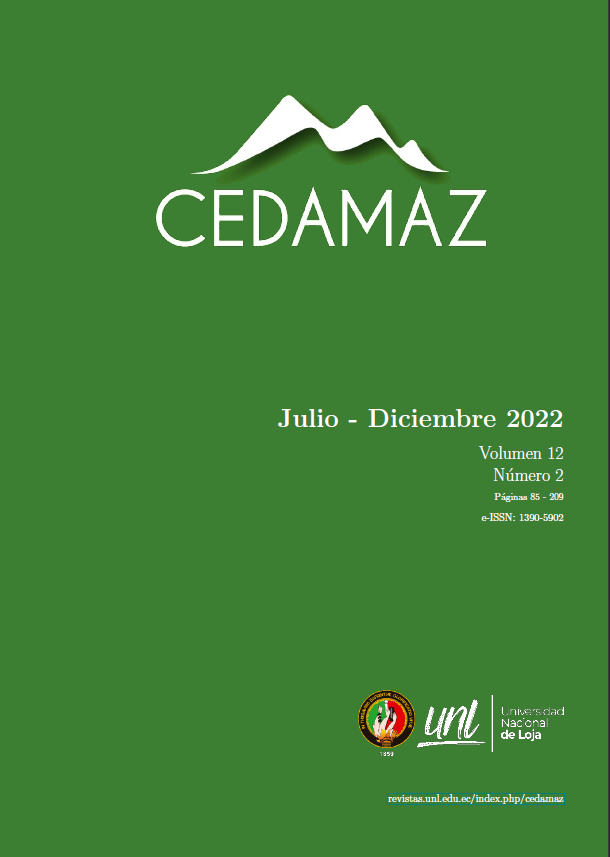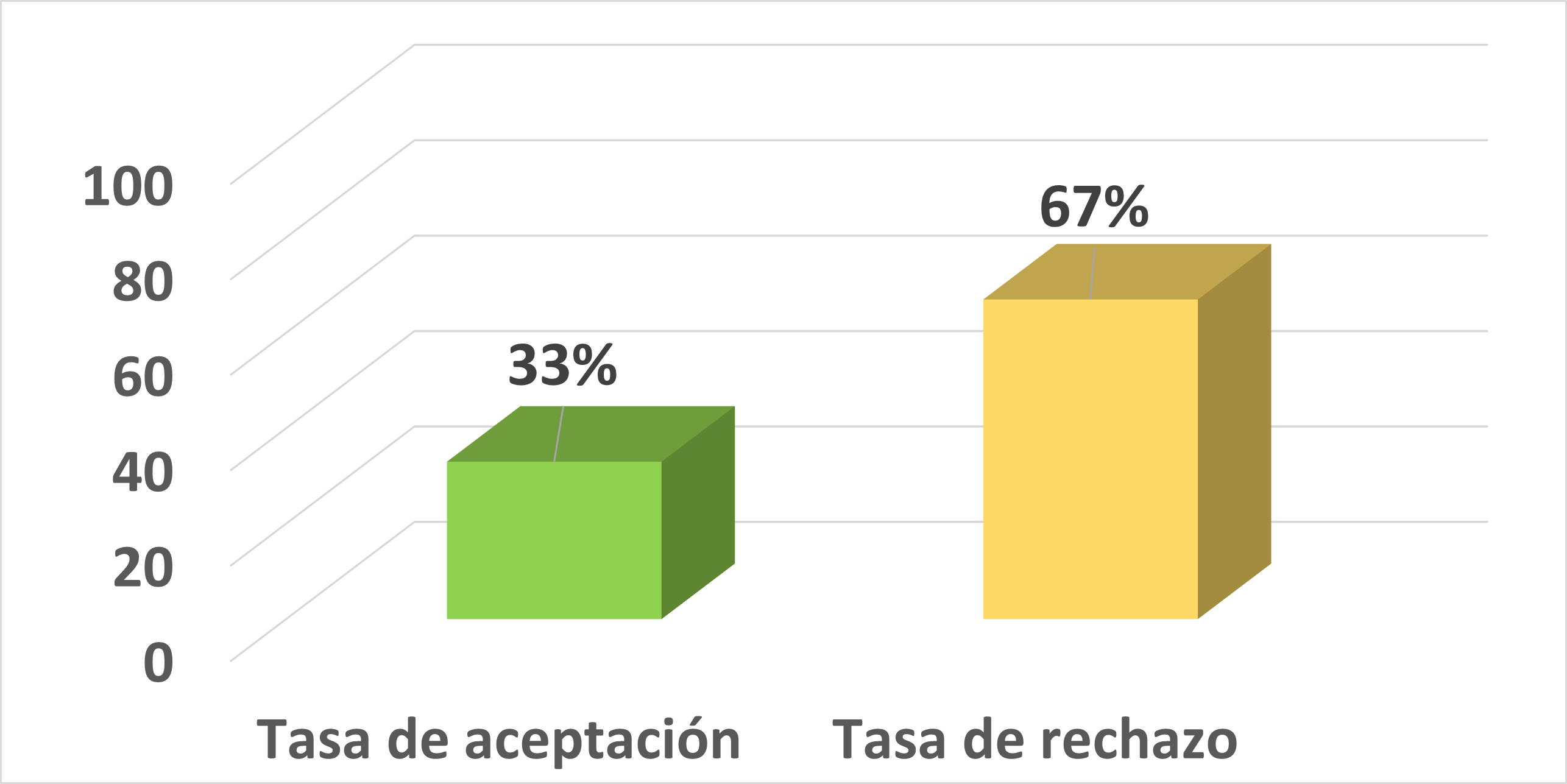Linear Programming model of operation and Multi-Area of an electrical power system
DOI:
https://doi.org/10.54753/cedamaz.v12i2.1553Keywords:
Economic Dispatch, Linear Programming, Electrical Power Systems, Distributed Generation, Renewable EnergyAbstract
The linear programming model of operation (LPO) consider from energy supply to final customer. In resolving the LPO of an electrical power system (EPS), the goal is to find the optimal allocation or economic dispatch (ED) of output power among the conventional generation technologies and and renewable power generation (specifically wind) to meet system load at a minimum operational cost. In the proposed model, it has been used using a deterministic-linear approach with mathematical expressions that use variables such as: status operation of generation units as a function of time, power dispatch from wind and conventional units, electricity deficit, power transfer between the bars, losses in the transmission lines. Additionally, factors and mathematical equations are included to deal with the wind variability. A didactic case study is presented to explain the proposed structure.References
Economic Dispatch, Linear Programming, Electrical Power Systems, Distributed Generation, Renewable Energy.
Ackermann, T., Andersson, G., y Söder, L. (2001). Distributed generation: a definition. Electric power systems research, 57(3), 195–204. DOI: https://doi.org/10.1016/S0378-7796(01)00101-8
Aliari, Y., y Haghani, A. (2016). Planning for integration of wind power capacity in power generation using stochastic optimization. Renewable and Sustainable Energy Reviews, 59, 907–919. DOI: https://doi.org/10.1016/j.rser.2016.01.018
Arboleya, P., Diaz, G., y Coto, M. (2012). Unified ac/dc power flow for traction systems: A new concept. IEEE Transactions on vehicular technology, 61(6), 2421–2430. DOI: https://doi.org/10.1109/TVT.2012.2196298
Ari kahan. (2020). International energy outlook 2021 (ieo2021) (Inf. Téc.). www.eia.gov.
Bitaraf, H., y Rahman, S. (2017). Reducing curtailed wind energy through energy storage and demand response. IEEE Transactions on Sustainable Energy, 9(1), 228–236. DOI: https://doi.org/10.1109/TSTE.2017.2724546
Cassola, F., Burlando, M., Antonelli, M., y Ratto, C. F. (2008). Optimization of the regional spatial distribution of wind power plants to minimize the variability of wind energy input into power supply systems. Journal of Applied Meteorology and Climatology, 47(12), 3099–3116. DOI: https://doi.org/10.1175/2008JAMC1886.1
Chen, P., Siano, P., Bak-Jensen, B., y Chen, Z. (2010). Stochastic optimization of wind turbine power factor using stochastic model of wind power. IEEE transactions on Sustainable Energy, 1(1), 19–29. DOI: https://doi.org/10.1109/TSTE.2010.2044900
Chowdhury, M. M., Haque, M. E., Aktarujjaman, M., Negnevitsky, M., y Gargoom, A. (2011). Grid integration impacts and energy storage systems for wind energy applications—a review. En 2011 ieee power and energy society general meeting (pp. 1–8). DOI: https://doi.org/10.1109/PES.2011.6039798
Cui, X., y Yan, Y. (2012). Economic dispatching problem with group and resource considerations. En 2012 24th chinese control and decision conference (ccdc) (pp. 4114–4117).
Goldemberg, J. (2012). The case for renewable energies. En enewable energy (pp. 31–42). Routledge.
Hetzer, J., David, C. Y., y Bhattarai, K. (2008). An economic dispatch model incorporating wind power. IEEE Transactions on energy conversion, 23(2), 603–611. DOI: https://doi.org/10.1109/TEC.2007.914171
Ibitoye, F. I., y Adenikinju, A. (2007). Future demand for electricity in nigeria. Applied Energy, 84(5), 492–504. DOI: https://doi.org/10.1016/j.apenergy.2006.09.011
Jordehi, A. R., Tabar, V. S., y Jirdehi, M. A. (2022). A two stage stochastic model for security-constrained market clearing with wind power plants, storage systems and elastic demands. Journal of Energy Storage, 51, 104550. DOI: https://doi.org/10.1016/j.est.2022.104550
Joskow, P. L. (2020). Transmission capacity expansion is needed to decarbonize the electricity sector efficiently. Joule, 4(1), 1–3. DOI: https://doi.org/10.1016/j.joule.2019.10.011
Larrahondo, D., Moreno, R., Chamorro, H. R., y Gonzalez-Longatt, F. (2021). Comparative performance of multiperiod acopf and multi-period dcopf under high integration of wind power. Energies, 14(15), 4540. DOI: https://doi.org/10.3390/en14154540
Liu, L., Wang, Z., Wang, Y., Wang, J., Chang, R., He, G., (2020). Optimizing wind/solar combinations at finer scales to mitigate renewable energy variability in china. Renewable and Sustainable Energy Reviews, 132, 110151. DOI: https://doi.org/10.1016/j.rser.2020.110151
Lopes, J. P., Hatziargyriou, N., Mutale, J., Djapic, P., y Jenkins, N. (2007). Integrating distributed generation in to electric power systems: A review of drivers, challenges and opportunities. Electric power systems research, 77(9), 1189–1203. DOI: https://doi.org/10.1016/j.epsr.2006.08.016
Lorente de la Rubia, J. (2011). Estudio sobre el estado actual de las"smart grids" (B.S. thesis).
Loukatou, A., Howell, S., Johnson, P., y Duck, P. (2018). Stochastic wind speed modelling for estimation of expected wind power output. Applied energy, 228, 1328–1340. DOI: https://doi.org/10.1016/j.apenergy.2018.06.117
Maheshwari, N., Chandrasekaran, M., y Babu, R. D. (2013). Optimization of electrical power using solar and wind energy systems. En 2013 7th international conference on intelligent systems and control (isco) (pp. 172–175). DOI: https://doi.org/10.1109/ISCO.2013.6481143
Pappala, V. S., Erlich, I., Rohrig, K., y Dobschinski, J. (2009). A stochastic model for the optimal operation of a wind-thermal power system. IEEE transactions on Power Systems, 24(2), 940–950. DOI: https://doi.org/10.1109/TPWRS.2009.2016504
Romero, S. R., Santos, A. C., y Gil, M. A. C. (2012). Eu plans for renewable energy. an application to the Spanish case. Renewable Energy, 43, 322–330. DOI: https://doi.org/10.1016/j.renene.2011.11.033
Sharpley, R. (2000). Tourism and sustainable development: Exploring the theoretical divide. Journal of Sustainable tourism, 8(1), 1–19. DOI: https://doi.org/10.1080/09669580008667346
Soroudi, A. (2017). Power system optimization modeling in gams (Vol. 78). Springer. Sovacool, B. K. (2009). The intermittency of wind, solar, and renewable electricity generators: Technical barrier or rhetorical excuse? Utilities Policy, 17(3-4), 288–296. DOI: https://doi.org/10.1016/j.jup.2008.07.001
Suberu, M. Y., Mustafa, M. W., y Bashir, N. (2014). Energy storage systems for renewable energy power sector integration and mitigation of intermittency. Renewable and Sustainable Energy Reviews, 35, 499–514. DOI: https://doi.org/10.1016/j.rser.2014.04.009
Sun, D., Li, X., Yang, S., Zhao, L., Wang, Y., Yang, B., Sun, Y. (2020). Integrated generation-grid-load economic dispatch considering demand response. En 2020 ieee/ias industrial and commercial power system asia (i&cps asia) (pp. 375–379). DOI: https://doi.org/10.1109/ICPSAsia48933.2020.9208351
Svoboda, A. J., Tseng, C.-L., Li, C.-a., y Johnson, R. B. (1997). Short-term resource scheduling with ramp constraints [power generation scheduling]. IEEE Transactions on Power Systems, 12(1), 77–83. DOI: https://doi.org/10.1109/59.574926
Trodden, P. A., Bukhsh, W. A., Grothey, A., y McKinnon, K. I. (2013). Optimization-based islanding of power networks using piecewise linear ac power flow. IEEE Transactions on Power Systems, 29(3), 1212–1220. DOI: https://doi.org/10.1109/TPWRS.2013.2291660
Tyagi, R. (2015). Integrating renewables in electricity markets. JSTOR.
Vespucci, M. T., Maggioni, F., Bertocchi, M. I., y Innorta, M. (2012). A stochastic model for the daily coordination of pumped storage hydro plants and wind power plants. Annals of operations research, 193(1), 91–105. DOI: https://doi.org/10.1007/s10479-010-0756-4
Wu, W., Wang, K., Li, G., y Hu, Y. (2014). A stochastic model for power system transient stability with wind power. En 2014 ieee pes general meeting| conference & exposition (pp. 1–5). DOI: https://doi.org/10.1109/PESGM.2014.6939022
Zheng, W., Wu, W., Zhang, B., Li, Z., y Liu, Y. (2015). Fully distributed multi-area economic dispatch method for active distribution networks. IET generation, transmission & distribution, 9(12), 1341–1351. DOI: https://doi.org/10.1049/iet-gtd.2014.0904
Zhu, J., Xiong, X., Lou, S., Liu, M., Yin, Z., Sun, B., y Lin, C. (2008). Two stage approach for economic power dispatch. En 2008 ieee power and energy society general meeting-conversion and delivery of electrical energy in the 21st century (pp. 1–5).
Published
How to Cite
Issue
Section
License
Copyright (c) 2022 CEDAMAZ

This work is licensed under a Creative Commons Attribution-NonCommercial-NoDerivatives 4.0 International License.
Those authors who have publications with this journal, accept the following terms:
- After the scientific article is accepted for publication, the author agrees to transfer the rights of the first publication to the CEDAMAZ Journal, but the authors retain the copyright. The total or partial reproduction of the published texts is allowed as long as it is not for profit. When the total or partial reproduction of scientific articles accepted and published in the CEDAMAZ Journal is carried out, the complete source and the electronic address of the publication must be cited.
- Scientific articles accepted and published in the CEDAMAZ journal may be deposited by the authors in their entirety in any repository without commercial purposes.
- Authors should not distribute accepted scientific articles that have not yet been officially published by CEDAMAZ. Failure to comply with this rule will result in the rejection of the scientific article.
- The publication of your work will be simultaneously subject to the Attribution-NonCommercial-NoDerivatives 4.0 International (CC BY-NC-ND 4.0)









